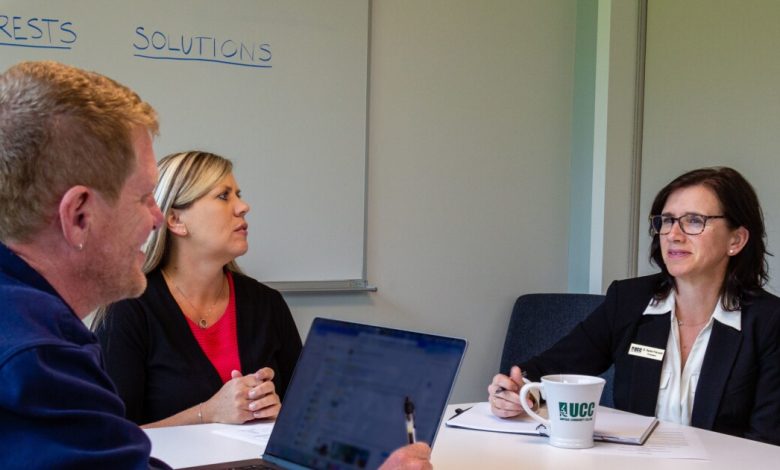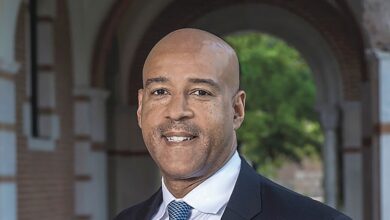How a College Found a Better Way to Bargain With Its Faculty Union

[ad_1]
Most of the time, negotiations between colleges and employee unions feature point-by-point battles over contract provisions and lots of lawyers. Often there is strong language alleging refusals, harm, and bad faith. Sometimes there are stalemates and strikes.
But people at a small community college in Roseburg, Ore., tried a more amicable approach — and it worked.
Faculty-union officials and college leaders at Umpqua Community College negotiated a new contract for full-time faculty members last month using a method called interest-based bargaining.
A hallmark of interest-based bargaining is that lawyers are not present in the room, said Kent Wong, director of the Labor Center at the University of California at Los Angeles. Instead, both parties come to the table with their shared goals and interests outlined. Umpqua’s faculty union and administration both identified the quality of their students’ education and faculty-pay increases as priorities.
The process often takes more time and preparatory work, and requires a deeper level of trust between administrators and faculty or staff unions, Wong said. But the goal, he said, is to emphasize common interests over personal needs, and to reduce tensions between the groups.
Both the union and the college save money on legal fees too. Umpqua saved about $50,000.
The college’s relationship with its faculty union contrasts starkly with the labor fights that have taken place recently across higher education. Graduate students at Indiana University at Bloomington recently wrapped up a monthlong strike in an effort to win university recognition of their union; Indiana officials haven’t budged on the matter. At the University of Alaska at Fairbanks, faculty members and administrators are still at odds after nearly a year of negotiations; the parties have entered mediation to try to break the standoff.
Though interest-based bargaining isn’t common in higher ed, Klamath Community College, another two-year institution in Oregon, first attempted the approach in negotiating a new faculty contract in 2014.
Wong said the approach is typically most successful at organizations in the public sector, such as colleges or local governments, that are more driven by a public-service mission than by the goal of maximizing profits, as in the private sector.
“They have a vested interest in delivering a quality product for the students, and to make sure that the institution is doing a good job in providing educational resources for their students,” Wong said of community colleges like Umpqua.
It’s a weird thing to say — I don’t know if ‘fun’ is the right word, but I don’t remember any point where we were mad and upset with each other or anything like that.
Dee Winn, chair of the science, technology, engineering, and mathematics department at Umpqua and an associate professor of math, is a representative for Umpqua’s faculty union, which is affiliated with the Oregon Education Association and the National Education Association. Winn said the union had been around since 2007, and previous negotiations were far more “adversarial.” The new approach felt more collaborative, and positioned the union and college leaders on the same side instead of on opposing teams, he said.
“It’s a weird thing to say — I don’t know if ‘fun’ is the right word, but I don’t remember any point where we were mad and upset with each other or anything like that,” he said. “As long as we can keep the focus on that — that we’re all in this together — I would highly recommend always doing it that way.”
Rachel Pokrandt, Umpqua’s president, said she and the faculty-union representatives had approached the negotiation with all of their respective interests written down. Pokrandt outlined the amount of money the college could direct in its budget toward a pay increase, and the faculty officials outlined the extent of the pay increase they were looking for.
The newly negotiated contract, which runs through June 2025, includes a 5-percent salary increase for all full-time faculty members.
“We started that way, and then to be honest we didn’t even use the framework after a little while because it set up a trusting relationship enough for us to really just start to problem-solve,” Pokrandt said.
The president said the approach also cut the amount of time they spent in talks. While the initial meetings, in February, ran as long as five hours, by the time they were wrapping things up, in May, the sessions were down to one to two hours.
Pokrandt said she’s now using the same method to negotiate a new contract with the college’s union of part-time faculty members.
“Oftentimes, outsiders from higher ed think that our beautiful buildings and our sports teams and everything else are our most important resource. And they are not,” Pokrandt said. “Our faculty are our most important resource. So we are going to move forward with an approach that is about making sure that our salaries reflect that.”
[ad_2]
Source link






